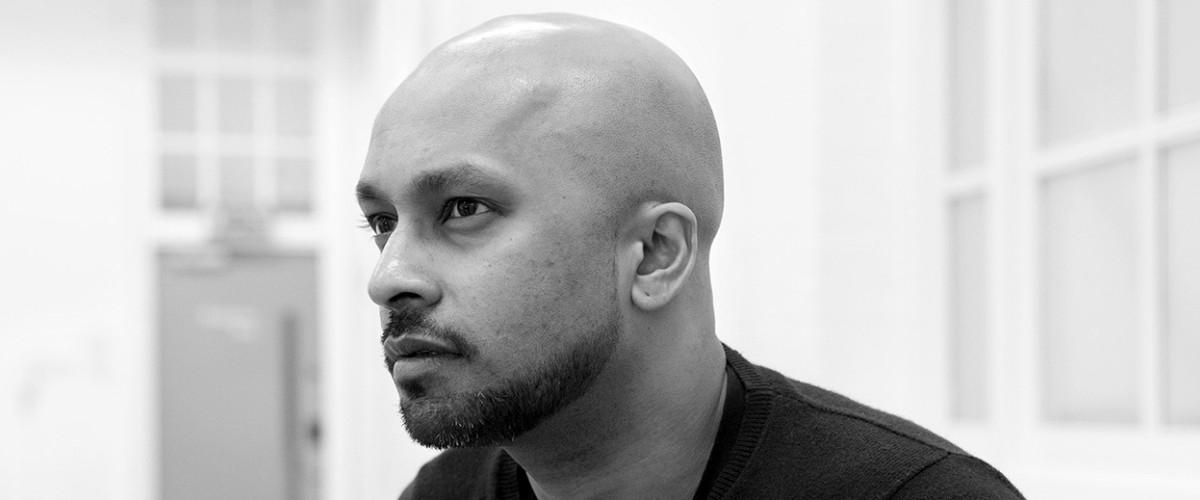

The trailblazing choreographer has co-curated Darbar's dance programmes since 2016. He discussed how classicism can be experimental in the context of this off-stage role.
—Part of Living Traditions: 21 articles for 21st-century Indian classical music
As a teenager, Akram Khan toured the world as part of Peter Brook’s eight-hour production of the Mahabharata. Each evening he would immerse into the ancient Indian epic, exploring themes of love, family, and war alongside sweeping visions of the cosmos. The work depicts the struggles of two noble families who vie for the throne of Hastinapura. They disagree about the proper line of succession, and their intergenerational feuding shrouds the world in darkness.
Khan sees the opposite phenomenon at work in today’s Indian classical dance world. For him, classical forms shine brightest when examining their own boundaries, and pushing the margins of what is considered ‘proper’. He knows that classical arts must experiment to survive, but acknowledges that innovating with traditional ideas is a fine balancing act. Modern experiments can miss the deep knowledge of the past, but ancient forms that stay too ancient are consigned to the history books.
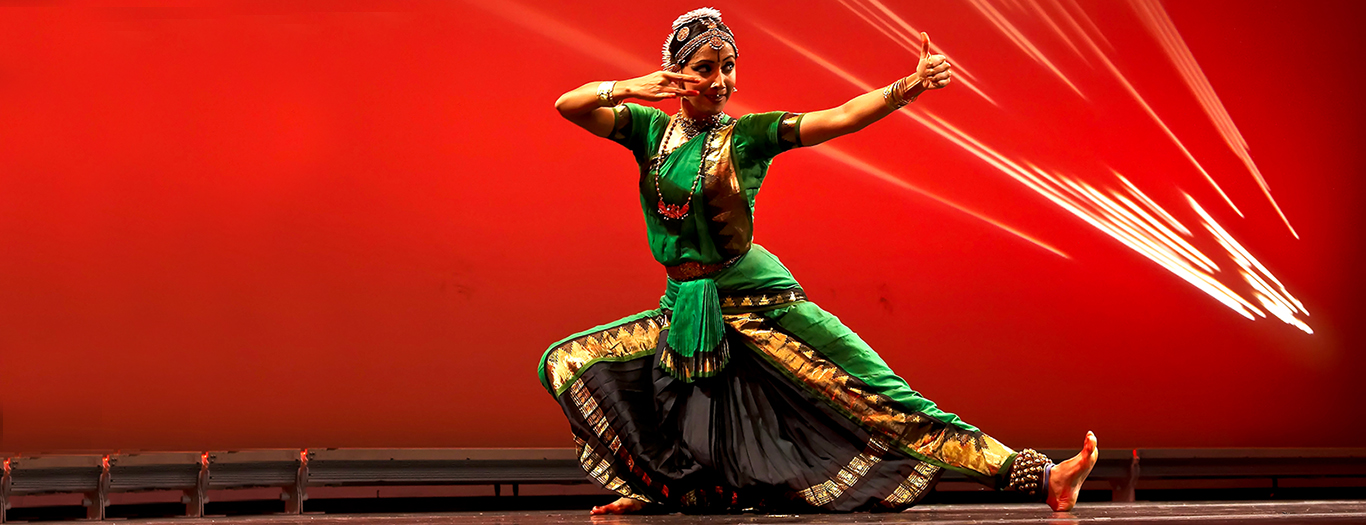
“Today’s world is so virtual and disembodied”. Photo: Rehmat Rayatt
Khan has always lived at the confluence of these tensions - classically trained, but not a classicist. In November 2018 he curates Darbar Festival’s dance programme, inviting some of his favourite artists for a three-day takeover of Sadler’s Wells. How did he choose what to represent?
“I believe the artist liberates the form. Great artists are storytellers, and you have to trust them to bring their own subjects to life. So for me choosing artists is more important than styles. They both have to combine to communicate something universal. For Darbar I chose classical artists from kathak, bharatnatyam, and odissi, which happen to be three of the best-known forms”.
Khan’s own roots are in kathak, and his choreography has never become unmoored from the style’s core characteristics - fluid spins, intricate hand gestures, and periods of calm punctuated by bursts of densely mathematical footwork. He has entrusted Sangeet Natak award winner Gauri Diwakar with representing it at Darbar. She will perform Hari Ho...Gati Meri (“Let my salvation be in the supreme”), a modern four-part solo work tailor-made for her by Aditi Mangaldas.
Elsewhere in the programme, bharatanatyam explorers Renjith Babu and Neha Mondal Chakravarty use subtle eye movements and striking limb geometry to evoke different incarnations of Shiva and Kali. Their unusual jugalbandi duet draws on yoga and ancient martial arts, balancing creation and destruction over Carnatic vocals and a live orchestral score. Mavin Khoo, its choreographer, will also be leading a bharatanatyam improvisation workshop, open to observers and participants.
Odissi dance can trace its roots back over two millennia, to carvings in the Manchapuri caves and descriptions in Sanskrit aesthetic treatises. It was suppressed to near-extinction under British rule but has since enjoyed a resurgence, adding theatrical elements to a core of sinuous postures and energetic jumps. Award-winning modern exponent Sujata Mohapatra will walk a rhythmic line between dance and drama at Darbar, dissolving character into shape with sensuous poise.
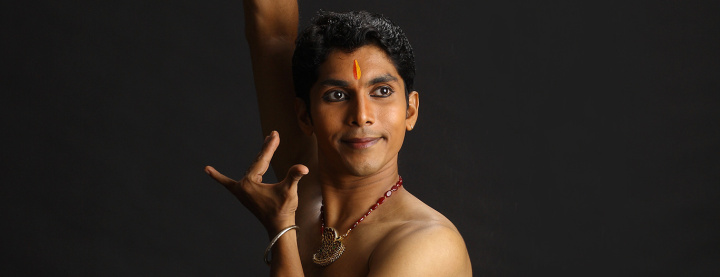
Modern bharatanatyam explorer Renjith Babu. Photo: Rehmat Rayatt
Khan has always been inclined towards fusion, mixing traditional Indian vocabulary with moves from Thriller on the carpets of his father’s restaurant as a child (“how I’d prance around…”). His programme reflects this, turning to artists from the experimental sides of classicism. But he recognises that they approach things differently.
“To me there are two ways of creating - you can push the walls of a room from within, or pull from the outside. I’ve always been on the outside, drawing from all styles that catch my eye. The artists I’ve selected are classicists, pushing from the inside of their rooms. Classicism isn’t about stasis - it’s about adherence to particular boundaries, and creating using ideas within them. They all show that traditional forms can evolve without losing their core”.
India has played host to deep cultural interchange for centuries, and its classical arts have always been in flux. They blend colour from multiple waves of history - Vedic rituals, Hindu metaphysics, Islamic colonial patronage, and English colonial influences. Khan is drawn to the places where these roots intertwine, pointing out that Mangaldas’ kathak piece is based on Muslim devotional poetry to Lord Krishna, a Hindu deity.
Indian classical dance is a global phenomenon now too, with plenty of innovation occurring outside the subcontinent. Bharatanatyam originated in Tamil Nadu, but Khoo is a Malaysian who trained in Britain and the USA as well as India. Others look elsewhere in the world, with Kiran Rajagopalan fusing Indian and West African ideas in New York recently.
Khan is himself a product of India’s vast artistic diaspora, born in Wimbledon to a Bangladeshi family. He frequently looks back East, collaborating with artists of South Asian heritage including Nitin Sawhney, Anish Kapoor, and Hanif Kureishi, but is adamant that he never chooses them on this basis: “It’s about whether their work has universal appeal. This has to come from the human story itself - one of imperfections and pain as well as beauty and joy. You should feel like you’re all learning together rather than being taught”.
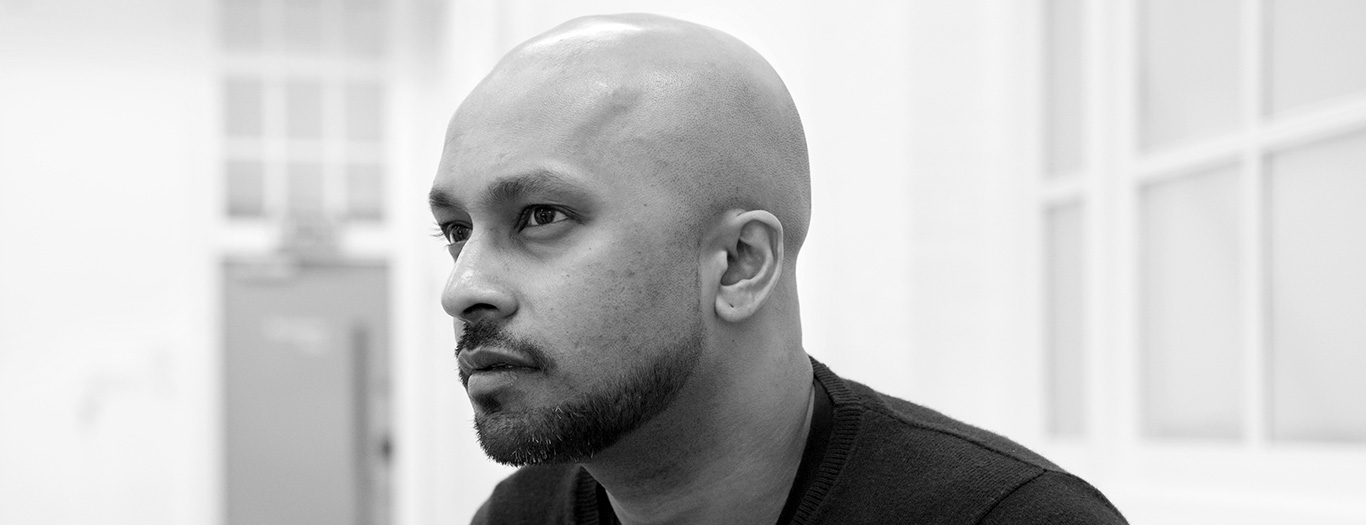
"Classicism isn’t about stasis". Photo: Darbar
So do Indian classical arts have a particular power to entrance the uninitiated? “I feel there’s something universal about narratives from ancient Indian history - the grand themes, the shared myths, the flawed deities. Indian dancers place themselves in the shoes of gods as well as mortals. And empathy is extraordinarily important - facial expressions and subtle body language communicate so much. I feel we’re drifting away from empathy in today’s world, and dance invites us to return to it”.
Kathak derives from physical storytelling, and the expressive techniques of the bards are still visible today. Khan sees that dance must embody complex characters and identities if it is to inspire broader social reimagination: “It can erase walls and boundaries within us. This may be momentary, but serves as a reminder that the walls are man-made, mainly coming from a place of fear”.
Devotees describe how middle-aged male dancers can suddenly morph into beautiful young women using only the subtlest of movements. This is no mean feat, especially while synchronising their footsteps and leaps to intricate tabla rhythms. Indian forms bring high demands, and training often starts early. “Classical dancers have to sacrifice themselves in a way - the physicality and precision are immense. There’s a certain discipline and rigour you can’t teach”.
Khan knows these feelings of obsession from the inside. After returning from the global Mahabharata tour he skipped school to dance, waving goodbye to his parents each morning before changing out of his uniform and practicing all day in the garage. He got away with it for a year, only being discovered when they turned up to bemused teachers at a school parents evening. “They realised how serious I was about dancing then. I practiced eight hours a day for long periods, but it never felt like a sacrifice - it was a need”.
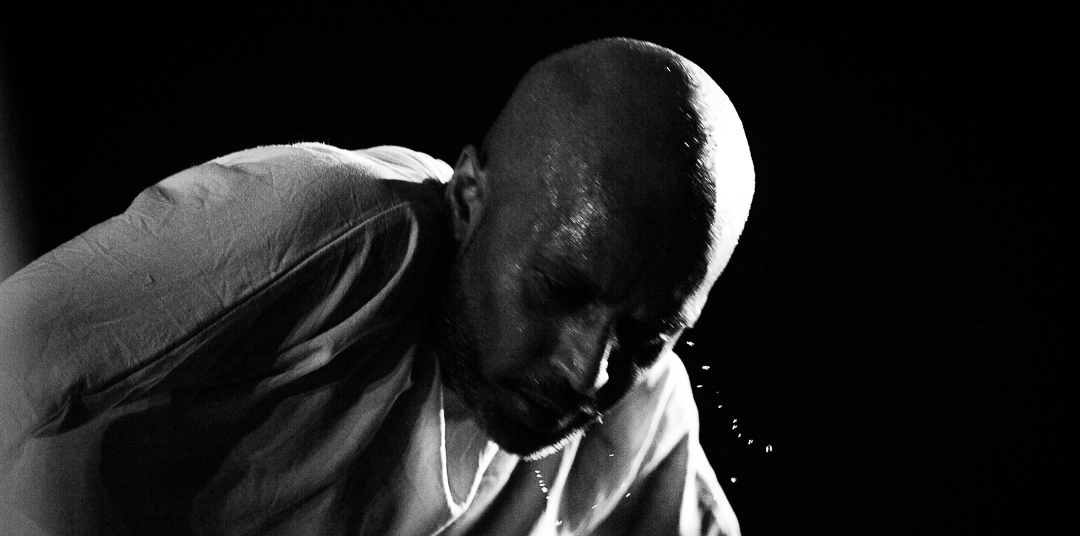
“Classical dancers have to sacrifice themselves”. Photo: Rehmat Rayatt
Newcomers to Indian classical arts often enter expecting a reverent atmosphere, and leave surprised at the sheer playfulness of the performance. Hindustani musicians will twist and stretch each other’s phrases, and kathak exponents are masters of mime, transforming into peacocks, demons, and many-faced gods at a moment’s notice. There is something refreshing and childish going on, as if witnessing a return to our most basic human impulses.
Choreographers combine the playful and cerebral, contrasting these mime-like expressional movements (abhinaya) with those embodying ‘pure form’ (nritta). A dancer may impersonate a flock of birds, then use rapid-fire footwork to tease new tensions from a 14-beat rhythm.
Khan credits Indian classical music with first opening his eyes to mathematics, and is drawn to kathak’s interlocking numerical patterns (perhaps a logical inclination is in his genes: his grandfather was a prominent Bengali mathematician). But he doesn’t see it as an abstract mode of engagement: “I had a natural impulse to search for sequences in the world around me, and ‘take things apart’ as I learned them”.
He feels that modern technology confuses our perceptual apparatus: “We live in a high-speed world, full of unfamiliar patterns of movement which blend representational elements with those of pure form. But modern life also pulls us towards logicalising everything, so we struggle with these ambiguities more than we should. Dance is such an ambiguous form of communication, and we misunderstand it if we forget this. We must be fascinated by ambiguity - art is always about what cannot be quantified”.
He explains how classical dance can directly address the messiness of the world around us, with all styles originating as much from everyday folk rituals as abstract Sanskrit philosophy. Dancers can summon the monsoon or harvest, and depict rivers, galloping horses, or vines swaying in the wind. He laments modern society’s disconnect with nature.
“Our relationship to the natural world is primarily a physical one. Humans have a need to explore and respond to the environment they’re in, but today’s world is so virtual and disembodied. The supermarket is the closest some people get to nature. Dance should be about celebrating the importance of our bodies, and reminding us that we can’t reconnect with our environment without them”.
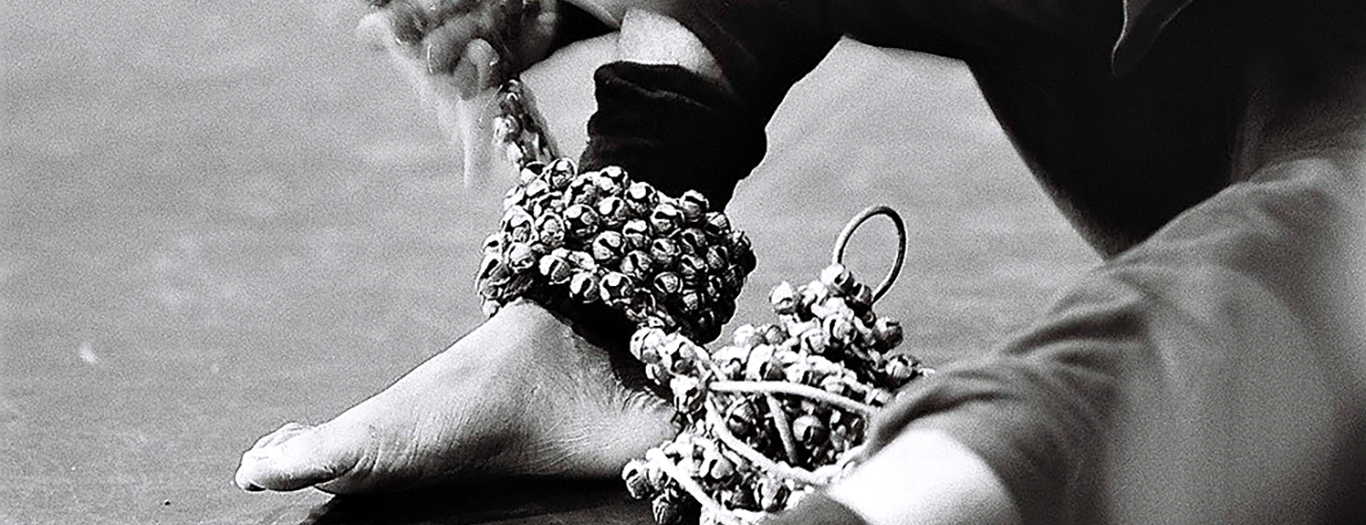
Akram wears ghungroos (ankle bells) to dance kathak. Photo: Akram Khan Company
I mention that six of the festival’s eight main dancers and choreographers are female. He recognises the rarity of this on the British dance scene: “Men have been dominant over civilisation. The injustice is still frightening, and unequal power dynamics can bring up the very worst aspects of humanity. People are in denial, and the arts world is no exception. We need more balance at all levels”.
Khan begins to tell me more about the Mahabharata, but then apologises profusely for having to run off to another appointment. There is plenty more to discuss - he will be giving a talk at Darbar on innovation and his classical roots. He may be retiring from full-length solo performance in 2019, but still leads the Akram Khan Company, and shows no appetite to retreat from the dance world. Some of his final remarks are revealing: “I always wanted to dedicate all I had to my art. I’ve talked about this with classical dancers - we feel that it can never really leave you”.
• George Howlett is a London-based musician and writer, specialising in jazz, rhythm, Indian classical, and global improvised music.
Darbar believes in the power of Indian classical music to stir, thrill, and inspire. Explore our YouTube channel, or subscribe to the Darbar Concert Hall to watch extended festival performances, talk and documentaries in pristine HD and UHD quality.
The Patiala khayal superstar discusses her unique cultural heritage, the power of physical expression, and how to...
Read More 
The Hindustani slide guitar pioneer discusses instrument creation and the hidden harmony in ragas. By George Howlett...
Read More 
Unlike many other classical traditions, India's ancient treatises on classical music have always cited dance as an...
Read More 
The beginner's guide to Indian classical music. Whether you’re completely new to raga music or just need a refresher, we’ve put together this brief overview of all things raga music to help you feel at ease when visiting one of our concerts or watch our videos on our YouTube or our Darbar Concert Hall.

Keep up to date with the latest news, events, music and musings across our social channels
For hundreds more clips and shorts, vist our YT page here 
Be the first to hear before events go on sale. Get the latest news and articles from Darbar